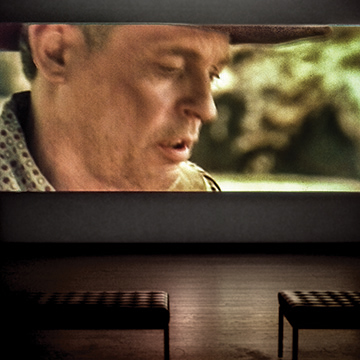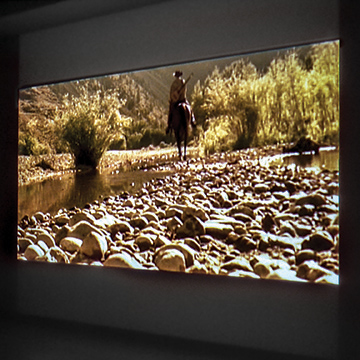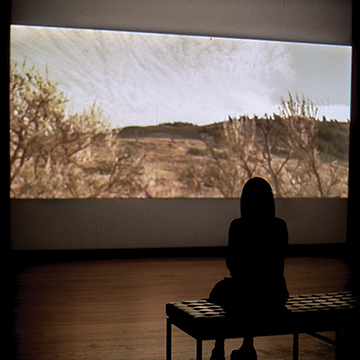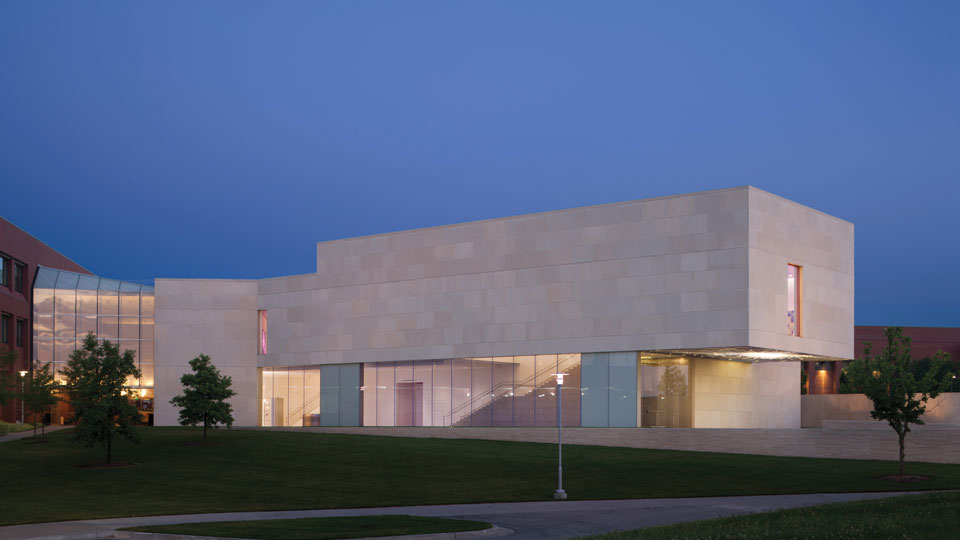Rodney Graham · How I Became a Ramblin’ Man
In cinema, the classic Western assumed an epic character. Subsequently subjected to decades of relentless appropriation by high and low culture alike, this theme has recently sparked a fresh response from conceptual artist Rodney Graham. How I Became a Ramblin’ Man reflects the artist’s interest in the enduring myth of the West and explores a seminal icon in the North American imagination.
Graham’s lyrical ode, draws on several well-established classic genres: the epic Western movie; the made-for-MTV music video; and the clichéd advertising image of the mythic cowboy, the Marlboro man, the ‟last survivor of the Western male in the heroic mode,” according to acclaimed novelist and screenwriter of the Southwest Larry McMurtry. This short film assembles and samples a plethora of devices, styles, shots, and structures from these disparate sources in order to construct an alluring, seductive work. Mock-cynical, wildly romantic, and earnestly sentimental, it finally contains a parodic yet nonetheless poignant confession, namely, the artist’s willingness to adopt the role of grifter, that nomadic antihero whose guitar has now replaced his gun as his signal attribute. Desire and fantasy fuel this vision of the stereotypical hero/artist of the former West.
How I Became a Ramblin’ Man is like a classic western; the narrative is in place, and the composition and framing seem to be taken right out of John Ford’s The Searchers. The protagonist radiates the modest decency of Jimmy Stewart’s character in The Man Who Shot Liberty Valance and the easy self-confidence of Johnny Guitar. Graham himself composes and sings his own country-and-western melody sitting by a brook in open prairie as his horse grazes idly nearby. The video is idyllic, dreamy, and patient, with none of the draw-at-high-noon angst normally associated with the genre.
Born in 1949 in Masqui, British Columbia, Rodney Graham studied art history at the University of British Columbia from 1968 to 1971 and at Simon Fraser University in Vancouver from 1978 to 1979. Beginning with a series of solo shows in the late 1980s, he has exhibited widely in North America and Europe, including in Documenta IX, 1992, and in the Biennale of Venice, 1993 where he represented Canada. His most recent museum exhibition was held at the Kunsthalle Vienna in the summer of 1999. Graham lives and works in Vancouver.





